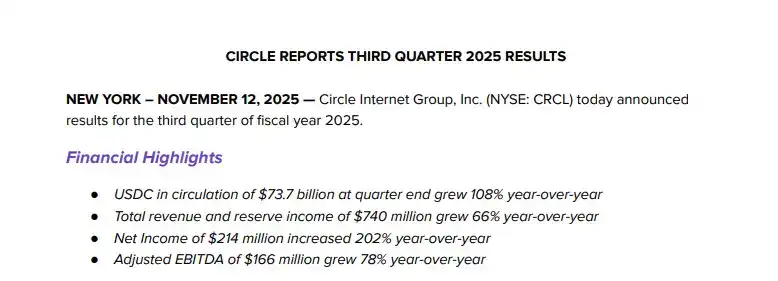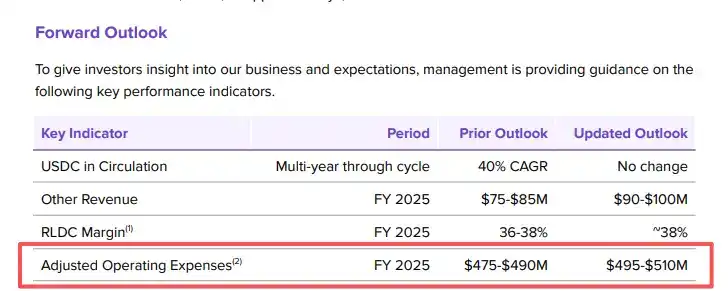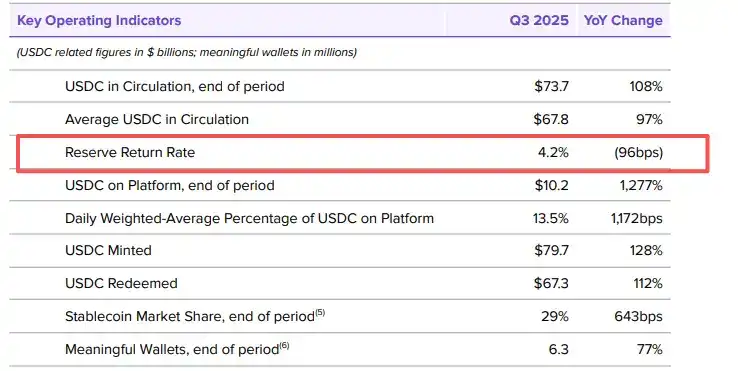Original author: Rubin, Influencer in the field of economics and management on Zhihu
Rhythm Note: This article is selected from the roundtable event "Penetrating Stablecoins" co-hosted by Zhihu and Rhythm BlockBeats. Since its launch, the roundtable has accumulated over 26 million views, widely attracting attention from both inside and outside the industry. The event aims to present the latest developments, key mechanisms, and future trends of stablecoins to the public in a more intuitive and systematic way.
Roundtable entrance: https://www.zhihu.com/roundtable/stablecoin
The following is the original content:
Circle seems to be flying high like a pig in the high-interest wind this quarter, but the market is worried that the wind direction may change:
Narrowing interest spreads, rising costs, a single profit business, regulatory uncertainty;
When these winds come, companies that fly high may also fall quickly.

Imagine the stock market as a "marathon-style gamble," where yesterday the contestant Circle rushed through a mid-supply station (Q3) and achieved a good profit result. However, after investors reviewed the report, they believed that the upcoming slope, contestant pacing, and supplies might not be sustainable, leading to a sell-off that caused the stock price to drop.
1) Investors are more focused on the "future"
Although Circle performed significantly better than expected in Q3, it also raised its full-year operating expense forecast ($495–510M), which means that the company's profit growth rate may be "eaten away" in the future, making it impossible to achieve high profits again.

2) Reserve yields are declining
Stablecoin companies like Circle make a significant portion of their profits by:
Issuing stablecoins, users buying stablecoins, and the company obtaining dollars to purchase conservative asset investments like government bonds/short-term notes.
This method allows them to earn interest spreads (reserve income) without having to pay interest.
The report shows that while the total reserve income is substantial, the single interest return rate of the reserves has decreased by about 96 basis points.
If market interest rates decline or short-term yields compress, this profit model will significantly shrink in the future, directly impacting profitability.

3) Revenue highly dependent on "reserve income"
Of the $740M in Q3, the vast majority came from reserve income ($711M), while "other income" (subscriptions, services, transactions, etc.) was only $29M.
In other words, Circle's current business resembles a large treasury management company that does not need to pay interest to users, rather than a traditional SaaS or payment company;
When the market is concerned about narrowing interest spreads or regulatory impacts, this single revenue model will be discounted.

4) Regulatory and policy risks
Stablecoins are closely related to reserve assets, and any regulation (such as strict rules on stablecoins from the U.S. Congress/regulators) or restrictions on reserve assets (for example, limitations on holding government bonds/short-term notes) will affect revenue expectations.
When regulatory uncertainty exists, investors often demand a higher risk premium, leading to sell-offs that cause stock prices to fall.
In fact, Circle is currently in a delicate phase:
Its profit model is healthy, and its compliance foundation is solid, but the growth story cannot continue.
Perhaps in the eyes of many traditional investors, it resembles a "dollar fund company," earning safe but unimaginative money.
免责声明:本文章仅代表作者个人观点,不代表本平台的立场和观点。本文章仅供信息分享,不构成对任何人的任何投资建议。用户与作者之间的任何争议,与本平台无关。如网页中刊载的文章或图片涉及侵权,请提供相关的权利证明和身份证明发送邮件到support@aicoin.com,本平台相关工作人员将会进行核查。




